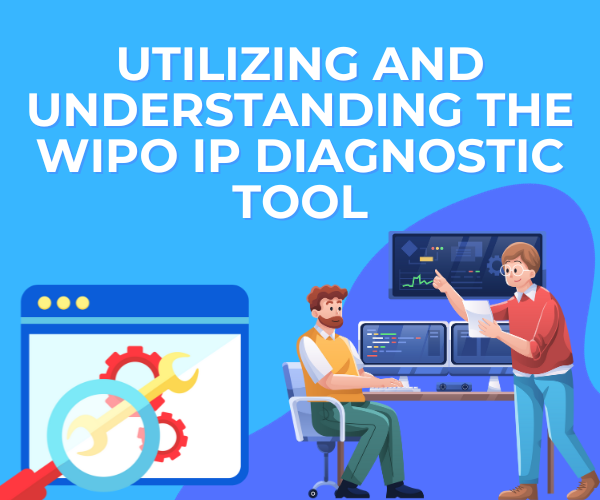Introduction
WIPO’s overarching mission is to promote the creation, dissemination, utilization, and safeguarding of intellectual works, fostering global cultural, economic, and societal progress through collaborative international efforts.
To this effect, the WIPO IP Diagnostics Tool stands as a pivotal achievement at the intersection of technology and intellectual property (IP). It paves the way for efficiency, and access to information by harnessing the power of technology.
India’s adoption of this tool marks a significant stride in the evolution of its IP landscape. This article offers a concise overview of the functionality and implementation of WIPO’s IP Diagnostics Tool, specifically highlighting its adaptation within the Indian context.
WIPO IP Diagnostic Tool
The WIPO Diagnostic Tool (“Diagnostics Tool”) serves as a free, user-friendly online resource, empowering both businesses and individuals to gain valuable insights into their intellectual property assets. By simply responding to a set of tailored inquiries pertaining to their ongoing business activities, users can swiftly generate a personalized report tailored to their specific business context.
The IP Tool offers a practical and straightforward approach to acquainting oneself with information regarding IP, pinpointing the IP assets within the organization, and commencing the journey towards crafting an IP strategy that enhances their value through effective utilization.
Who is it for?
The Diagnostic Tool is a resource accessible to all, with a particular emphasis on aiding small enterprises in the identification of their intellectual property (IP) assets, along with providing initial guidance on strategies for protecting, preserving, and leveraging these assets to enhance their intrinsic value.
Furthermore, small business intermediaries, encompassing organizations that actively support SMEs, including innovation agencies, incubators, accelerators, startup support entities, chambers of commerce, and more, can also harness the capabilities of the IP Diagnostics Tool.
This invaluable tool is entirely cost-free and offers a panoramic view of potential intellectual property aspects across all vital domains within your organization. Its user-friendly interface ensures a seamless experience, and within just an hour, it furnishes a comprehensive, tailor-made report specifically designed to align with your company’s unique characteristics. These personalized reports are conveniently available for download in PDF format.
The WIPO IP Diagnostics evaluation can be conducted as frequently as desired, allowing users the freedom to harness its benefits at their convenience.
How to use it?
Intellectual Property stands as a pivotal asset for businesses, especially Small and Medium Enterprises (SMEs), aiming to establish themselves as global brands through strategic IP management. To this end, the Diagnostic Tool emerges as a valuable resource. This user-friendly survey tool is designed to facilitate a seamless user experience by posing a series of pertinent questions, aligning with the user’s specific business operations. These inquiries encompass various aspects of IP, including Patents, Trademarks, Designs, Copyrights, and Trade Secrets.
To grasp the functionality of this tool, let’s delve into the process. The WIPO Diagnostics tool presents straightforward questions, prompting users to respond with either “yes” or “no.” Upon entering the WIPO IP Diagnostics website, (also available at the IP India website) users encounter ten key questions, each tailored to the specific nature of their business. These questions cover a range of vital considerations:
- Innovation and Uniqueness: Does your business involve innovative products or technical advancements?
- Copyrighted Material: Do you use any publishing materials, such as pamphlets, labels, software, or music clips?
- Aesthetic Features: Do you employ patterns, shapes, or colors to enhance the appeal of your products?
- Confidential Information: Do you handle commercially valuable information you wish to protect from competitors?
- Branding: Do you use logos or other distinctive signs to differentiate your products or services?
- External Collaborations: Do you rely on external suppliers, contractors, or consultants for various aspects of your business?
- Web Presence: Do you have or intend to create a website?
- Cross-Border Operations: Do you engage in cross-border sales?
- Workforce: Do you have employees?
- IP Expertise: Do you access intellectual property services or expertise?
Once the user responds to these queries, the tool compiles an assessment, offering guidance based on the user’s input. The Diagnostics Tool also serves as a repository of information from various WIPO member countries. When a user from a specific country participates in the self-assessment, the tool tailors its evaluation to that country’s IP laws.
For instance, if a user indicates having employees and producing copyrighted materials, the tool provides insights related to the Copyright Act of the user’s country. It goes a step further by suggesting potential improvements and administrative measures, such as crafting Non-Disclosure Agreements to safeguard the user’s IP.
Conclusion
In summary, the Diagnostics Tool serves as an invaluable compendium of information regarding national IP laws and offers essential guidance across multifaceted IP aspects. However, it’s worth noting that this tool offers general guidance rather than tailored, bespoke advice. It provides predetermined answers based on standard scenarios, which may not address highly specific, individualized concerns. As the Diagnostics Tool continues its development, it is a promising technological advancement for resolving IP-related questions, but it may still necessitate consultation with dedicated IP advisors for precise, case-specific guidance.



